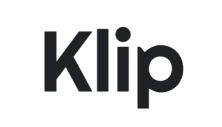Finding a good book scanner for library is not an easy task. You will have to understand what are the requirements, what is needed and what optimization is required to successfully process the volumes expected.
We will see today if the Klip Snap is up to the task and what actually makes a good book scanner for library.
What to look for in a book scanner for library
Where should we start with this. First of all you have the usability and in general the ease of use. Usually these scanners are installed in the reading rooms of different libraries. So most of the users will actually be readers, I guess not all of them avid tech geeks. This means the device has to be operated even by someone without any prior knowledge.
The second thing is something you might not imagine is very important, but actually, it really is. You need to transfer the files, either to a mail, or onto a usb stick. And it has to be very easy, almost like inserting a usb stick and after clicking scan, the files just transfer automatically. No mouse clicks, no copy paste, no setting target destination, just clear and quick upload.
Last but not least, you want the book scanner to do the least damage to the books as possible. If we are to be honest, if you were to scan a book repeteadly with any scanner, a certain damage would be cause. We are looking for the least damage to the book as possible, so you need elevating cradles and adjustable flattening glass. A major plus would be the possibility to increase the spread between the cradles, to allow for the different size gutters to sit as well as possible.
How does the Klip Snap fare as a book scanner for library
So, where to start with the Klip Snap. Let’s first look at the scanning size. It will scan documents that exceed A3 in size. So this should cover most library books by far. I guess it would not cover those that are 2 by A3, such as bound newspapers, but you won’t have many of those coming in for scanning. As i mentioned, for most books you should be fine with the Klip Snap.
The second thing is the flattening glass. Look, I know most manufacturers claim that their scanner or document camera will correct the book curvature automatically, but it’s not a given. The glass will always give you that edge in terms of quality, no matter how good your curvature correctin system is. You can see below for example the OCR results with a book scanned on the SV600 with and without the Klip Snap. You can clearly see the confidence levels are definitely different, with a major advantage for the Klip.
Then we come to the best part, the elevating cradles. First of all, the book cradles are separate and independent in operation from one another. This means that you can perfectly adjust each one, up and down, no matter how thick or thin the document is. Then we come to the best part of this device. The fact that the cradles will move distance apart from one another, so you can perfectly adjust for just about any thickness of book you need. This is something that does not seem much, but in all fairness, it should do wonders for scanning materials.
One thing that I must say will probably be an issue with Klip is the file transfer. But this is not to the Klip cradle, it’s infact the problem of the SV600. The Fujitsu, just like any other document camera will require connection to a PC. So to transfer files, you will have to copy paste documents, from the scanned folder, to your usb drive. It’s not that dificult, of course, but it would help to be easier.
Should you buy the Klip Snap as a library book scanner
Of course we will say yes, it’s our product. But in all fairness, what else can you get? Similar performing bookscanners are thousands of dollars more expensive, and for most materials, they don’t offer much more. Yes, some will have higher resolution, but for reading rooms you will never scan more than 300dpi.
In terms of protecting the scanned materials, again, there is actually no difference. I would say our device is a bit safer, given that it allows you to move the cradles up and down, and also sideways, therefore reducing the pressure on the binding. So all in all, yes, we would definitely recommend the Klip Snap as a library book scanner.
